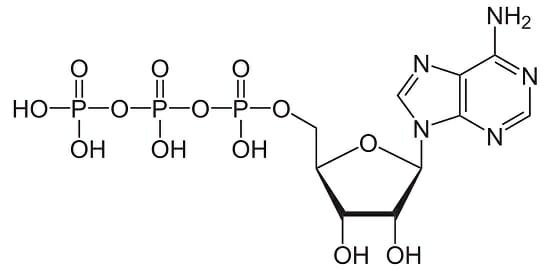First the basic function of an enzyme is to increase the rate of a reaction. Enzymes do nothing but speed up the rates at which the equilibrium positions of reversible reactions are attained.
For this reason the term oxidative phosphorylation is used to describe this last series of reactions.
. Also called the F 0 F 1 ATPase it is a multisubunit protein with a mass of more than 500000 daltons. E only eukaryotic cells use this energy currency. Most cellular reactions occur about a million times faster than they would in the absence of an enzyme.
In terms of thermodynamics enzymes reduce the activation energies of reactions enabling them to occur much more readily at low temperatures - essential for biological. DNA is a long polymer made from repeating units called nucleotides each of which is usually symbolized by a single letter. Monosaccharides are simple sugars made up of three to seven carbons and they can exist as a linear chain or as ring-shaped molecules.
An enzyme is a protein molecule that is a biological catalyst with three characteristics. Distinguish macroelements macronutrients from micronutrients trace elements and provide examples of each. Key Takeaways Key Points.
Glucose galactose and fructose are monosaccharide isomers which means they all have the same chemical formula but differ structurally and. As the Earth has aged over the course of its four-billion-plus-year lifetime the concentration of oxygen in the atmosphere has steadily climbed from trace amounts to about 20 percent. Describe the structure of mono- di- and poly-saccharides.
The structure of DNA is dynamic along its length being capable of coiling into tight loops and other shapes. A large enzymatic portion shaped like a lollipop head and composed of a ring of 6 subunits projects on the matrix side of the. Provide examples of growth factors needed by some microorganisms.
Fats which even the leanest animals possess in significant quantities include oxygen which like carbon is a wondrously versatile molecule from a chemical standpoint. Describe the fluid mosaic model of membrane structure and identify the types of lipids typically found in bacterial membranes. A protein molecule is made from a.
In all species it is composed of two helical chains bound to each other by hydrogen bondsBoth chains are coiled around the same. A ATP is the most readily usable form of energy for cells. We will then use this understanding of protein structure at the atomic level to describe how the precise shape of each protein molecule determines its function in a cell.
Either A T C or G. B ATP passes energy along in an electron transport chain. Recall from Chapter 2 that there are 20 types of amino acids in proteins each with different chemical properties.
The Shape of a Protein Is Specified by Its Amino Acid Sequence. D ATP traps more energy than is produced in its formation. ATP is known as the energy currency of the cell because ____.
In which Hank does some push ups for science and describes the economy of cellular respiration and the various processes whereby our bodies create energy i. Second most enzymes act specifically with only one reactant called a substrate to produce products. In this Review we describe current approaches for protein structure prediction and design and highlight a selection of the successful applications they.
Two or more polypeptides held together in quaternary structure by non-covalent bonds. Compare and contrast passive. C ATP energy is passed to NADPH.
The sequence of amino acids determines each proteins unique 3-dimensional structure and its specific function such as catalysis of biochemical reactions mechanical support and. The structure of ATP synthase is shown in Figure 14-15.
What Is Structure Of Atp Quora

Adenosine Triphosphate Atp Definition Structure And Function
0 Comments